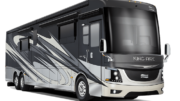Part science, part hokum, part best guess. I sure wish I could say it wasn’t, but when it comes to estimating the area served by a cell booster, there are just a lot of very fuzzy things that go into the equation. Some manufacturers flat out refuse to state the range of their boosters, relying instead on the amplification number which is scientifically measurable. Others will say “should cover 5,000 square feet” or something else like that. Why are they so cagey, when it seems like this should be a no-brainer?
The simple fact is that every situation is different. The manufacturers can tell you how a booster performs in a reference situation. That part’s easy. Figuring out how the system will work for you is a little harder.
Here are some of the things that can make a difference with your installation:
Antenna placement
This is the easiest one to fix usually, unless you can’t fix it in which case, well, it isn’t. Cell boosters have complicated anti-feedback circuitry that cuts booster power if there’s a problem. This happens automatically and in a lot of cases the booster will keep going at its maximum power and you won’t even know there’s a problem. Really, though, you want to make sure that there is at least 15 feet of separation between the outdoor antenna (if your booster has an outdoor antenna) and the indoor antenna. Ideally the outdoor antenna (if there is one) should be up 15 feet from the ground for the best results anyway, but then that would imply the booster itself would have to sit on the floor. Make sure there’s plenty of distance.
Attenuation due to “stuff in the way”
Again, this is easy to solve except when it isn’t. Boosters themselves aren’t the most gorgeous things in the world and there’s a tendency, especially at home, to hide them behind furniture or away from sight. Really, if you want the best results you can’t be doing this. Moving the booster or the indoor antenna somewhere that’s visible may not make you feel very “feng shui” but it’s going to give you the best results.
On the other hand, the “stuff in the way” could be the wires in your walls. If your building is wired with flex conduit or if it has aluminum studs, things like that are seriously going to cut down on the range of any cell booster. Really there is nothing you can do about that except add additional antennas to try to distribute the signal more evenly.
Other electrical appliances
In theory, your TV, microwave, tablet, land line phone (if you still have one) shouldn’t interfere with cell phone reception. All that stuff is tested by the FCC to make sure that it doesn’t generate excess interference. But as appliances age, they sometimes will generate more radio-frequency interference than they were intended to. In cases like this, it’s not too hard to figure out what the problem is, such as if you lose cell service every time Jim in Accounting makes popcorn.
And sometimes, there’s just other stuff. It can be the airflow in the building. Sometimes or the way the carpet is laid, or a thousand other things are to blame. There’s a lot that can cause the signal not to propagate the way someone expects. Sometimes, you can put a cell booster antenna in the middle of a 10,000 square foot space and get great coverage. This can be true even if the system is rated for 6,000 square feet. Sometimes you can put a booster into a 2,000 square foot home and not get good coverage in the entire house.
That’s why the manufacturers are apt to fudge. There’s no way that anyone can promise anything unless they come out and do a complete, exhaustive survey of what’s going on. Estimates of coverage can vary wildly.While that does make it a little harder to know what to buy, in the end you really can’t go wrong paying just a little more for a slightly more powerful unit.
How to get the booster you need
Choosing a cell booster should be as easy as 1, 2, 3. And sometimes, for some people, it is. But if you want more help, we’re here! Our technicians know all the right questions to ask and we can drive you to the solution you need! The technicians in our Michigan call center are ready to help during East Coast business hours at 888-233-7563. If it’s after that, just fill out the form below! We’ll take care of you!





